Kiin Kiin , meaning"eat, eat" or “come eat”, is the only Michelin starred Thai restaurant in Europe as far as I am aware (there is also one called Kin Khao in San Francisco given a star in the 2016 Michelin). Kiin Kiin is located in a formerly sketchy area of the city, so sketchy that just after the restaurant opened the police raided it and discovered a hidden stash of drugs in the basement. It has spawned a next-door sibling called Aroii and now further offshoots around the city. However the flagship restaurant of the group, seating 50, remains this, run by Hendrik Yde Andersen. For the last five years the head chef has been the energetic and charming Laddaporn Wichangoen, who conveniently for those who struggle with lengthy Thai names has the nickname "Dak".
There is a set menu only, priced at DKK 975 (£99). The wine list was unusually well thought through for a Thai restaurant, where wines can so often be an afterthought. Fritz Haag Brauneberger Trocken Kabinett 2013 was DKK 575 for a bottle that you can find in the high street for DKK 157, Donnhoff Oberhauser Brucke Spatlese 2012 was DKK 675 compared to its retail price of DKK 315, and Philippe Pacalet Mersault 2014 was DKK 1,575 for a wine that you can find for DKK 814 in a shop. The list was strong on Rieslings, with extensive German and Alsace choices; this makes sense since Riesling is perhaps the ideal grape variety to pair with spicy food. If you really want to chance your arm mixing chillies with fine Burgundy then you could choose something like Domaine Lafon Clos de la Barre 2010 for DKK 1,975 compared to its current market value of DKK 1,481.
Initially customers sit in a lounge area on the ground floor and are brought a flurry of nibbles before moving to the upstairs dining room. A lotus nut macaron with a spicy garlic dip was unusual and had plenty of kick; this came with a little tube containing a lively five-spice soup (15/20). A cornet, seemingly a spicy nod to the well-known salmon cornet dish at The French Laundry, was made using 32 ingredients but the dominant flavours were tamarind, chilli, ginger and lime peel. This was terrific, having a lovely fresh feel with a punchy spicy punch, the cornet delicate (17/20). An eggshell contained pad krapow (Thai holy basil chicken) with a little fried rice and had vibrant spicing (16/20). A spicy warm egg white dish had very thin bonito fish flakes that appear to "dance". This is a phenomenon known in Japanese cooking where the very delicate flakes react to the heat of a dish they are embedded within and sway gently as if in a breeze. The effect is pretty, though in this case the flavour of the dish was merely pleasant compared to some of the other dishes (15/20).
Frozen chicken satay with ginger with peanuts and chicken skin was unusual, though I wondered if it might actually be better as a regular hot satay (15/20). Aubergine chilli with smoke bone marrow was served with a little cracker to scoop off the bone and had good spicing (15/20). Squid smoked on coriander with coriander was not quite in the league of the other nibbles, the flesh being not quite as tender as it could be, though decent enough (14/20). A cashew nut bag with lime with an edible wrapper seemed to me a culinary trick too far, as the overall effect was a little dry (13/20) but a smoked duck and chicken sausage with kim chi had punchy spices and was delicious (16/20). Certainly overall this was an inventive and enjoyable set of nibbles, and suggesting a kitchen that had plenty of culinary awareness.
The first formal dish of the meal had three components. A clear tom yum broth in a bowl had on one side prawn and coriander fritter and on the other prawn chips with scallops and lemongrass. A syringe was provided to squeeze tofu into the broth to create a sort of home-made noodle. The prawn fritter and scallop elements had lovely flavour (16/20) but the broth was stunning, having extraordinary depth of flavour. It is created by making a broth using langoustine shells, cooked with herbs and spices herbs, then clarified, then cooked again with herbs and clarified once more. This sequence is repeated five times, resulting in a consommé with quite remarkable depth of flavour, the most prominent taste element being galangal. 18/20 is probably too mean a score for this little consommé, a dish that shows a kitchen that really knows how to extract flavour.
Next was a poached egg served with a cream of wild garlic, little whole shrimps, ginger foam with coriander and skewers of grilled asparagus with miso. I was slightly less convinced by this dish, the mix of hot and cold always tricky to pull off, and the miso glaze being quite salty, though the asparagus was good and the foam worked well (14/20).
Next was "a postcard from Tokyo", salmon sashimi with garlic, lime, ginger and onions, topped with a thin ice disk of soya and sesame. This was terrific, the fish excellent but the key was the tremendously vibrant spice blend, each flavour coming through clearly yet the combination in careful balance (17/20).
A Thai salad often has a blend of spice, sourness and sugar, and the next dish had an unusual take on that idea. Cotton candy and Italian meringue was the base of the salad, providing the sugar element. To this was added chunks of halibut and a marinade of chilli, garlic, lime juice and fish sauce, pickled green tomato coriander and fresh herbs. This sounds odd but worked brilliantly, the blend of sweet, sour and spicy elements in perfect balance, the lime providing freshness and the fish carefully cooked (17/20).
Red curry was next, with baby lobster from Laeso island off the Jutland peninsula, along with asparagus, lichen foam, coconut milk and lychee. This dish was actually served in two styles, one conventional and the other with the same elements but frozen and swirling in dry ice, so a hot and a cold version of the same dish. Ignoring the trickery, the red curry itself was lovely, the spicing again spot on and the lobster tender. I preferred the hot to the cold version but it was certainly an unusual idea (16/20).
Sweetbreads were prepared as sweet and sour - with tamarind, palm sugar and rice vinegar. This came with peanuts and fresh lemongrass, pickled pineapple with black pepper, pickled pearl onion, sorbet of pineapple and ginger and rice paper with carrot and potato flavours. The sweetbreads themselves were excellent, and their inherent richness was really well matched by the rice vinegar and its balancing sweetness from the tamarind, along with the acidity of the pineapple. This was an inventive yet highly logical dish, the flavour balance again very carefully judged (17/20).
The final savoury dish was flat iron steak with braised oxtail, fermented radish, sweet peas, holy basil, oyster sauce not from a jar but made from scratch in the kitchen with oysters,, ginger and dried basil, peppercorn and garlic. There was a final garnish of crispy kale and a little bowl of (excellent) jasmine rice to one side. I preferred the oxtail to the steak, but again the sauce was the star, the flavours coming through clear and strong (16/20).
I was able to try an extra dish of a simple bowl of new season strawberries from an artisanal producer in the south of Denmark that had lovely flavour, the kind of taste that strawberries had decades ago but sadly has been all but lost in the industrial agricultural age with its perfectly shaped yet flavourless fruit. Simple yet lovely.
The official dessert was a sort of cocktail of rhubarb, elderflower and passion fruit that was consumed through a straw, served with lime ice cream and holy basil sorbet, crispy salted meringue with some herbs on the side. This again tasted better than it sounds, the lime ice cream a revelation (16/20). Finally, coconut ice cream with sea salt came with cocoa nibs, banana cake with almond flavour and five spice, coconut flakes and frozen coconut foam, as well as a caramel of condemned milk.
Coffee was not a mere afterthought as it can be in Asian restaurants, here from a supplier called Coffee Collective and having good acidity. As a final culinary trick two bowls appeared, one seemingly of red chillies and the other of cinnamon bark. This was a game of petit fours Russian roulette, as in the respective bowls was a single chocolate made to appear like cinnamon bark and a red chilli respectively - but which? It was actually quite easy to spot the chocolate "cinnamon" but the chocolate version of red chilli was very cleverly disguised. This was just a bit of fun but it seemed a fitting end to a meal that used modern culinary technique freely yet never at any point did this at the expense of flavour or pleasure. Service was friendly and the bill came to DKK 1,415 (£154) with plenty of beer and good Riesling.
Although the arithmetic average of the dishes works out at a score between 16 and 17, only a couple of relative slips dragged my overall score just below the 17/20 threshold, and there were certainly several dishes that for me were clearly in two Michelin star territory. This was a thoroughly enjoyable, playful and surprising meal, from a kitchen whose chef deeply understands flavour and balance. It is interesting that, unlike some fancy Copenhagen restaurants, Kiin Kiin is constantly full, serving 77 covers on this midweek night in a 50-seat restaurant. If you are ever in Copenhagen then do yourself a favour and come here.
BookFurther reviews: 01st Aug 2009

























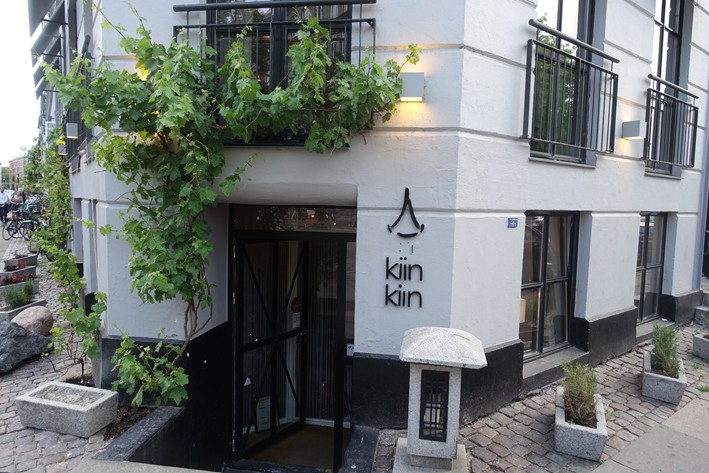

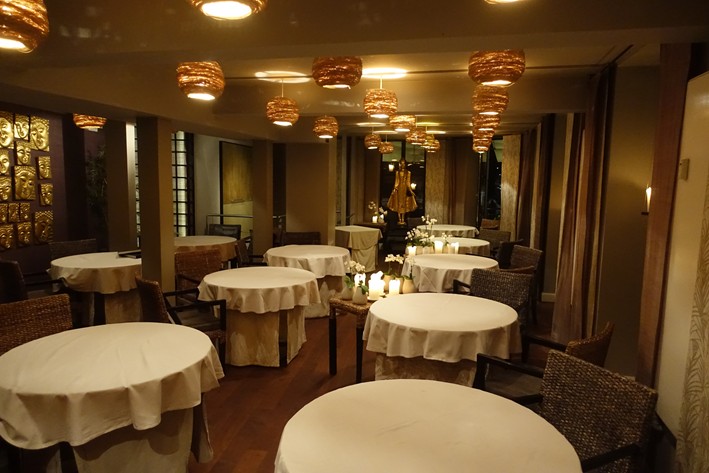

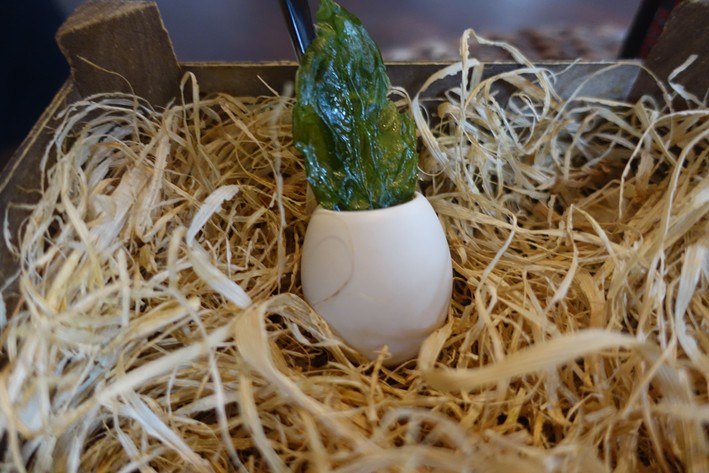
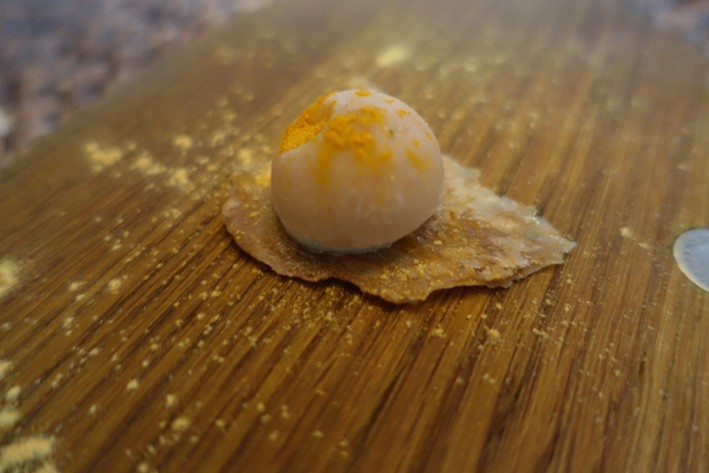
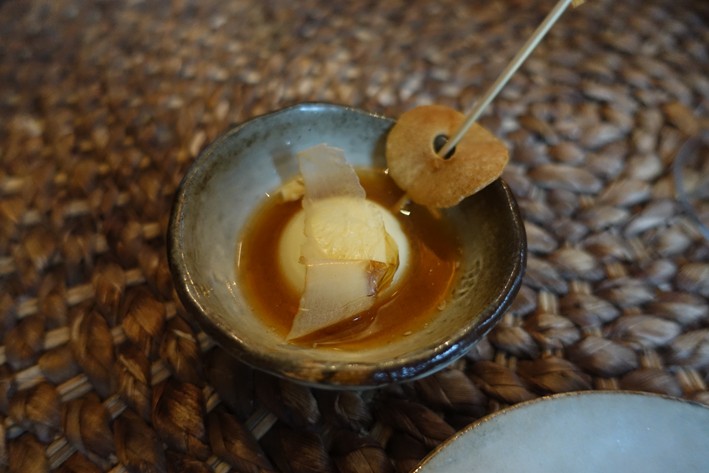
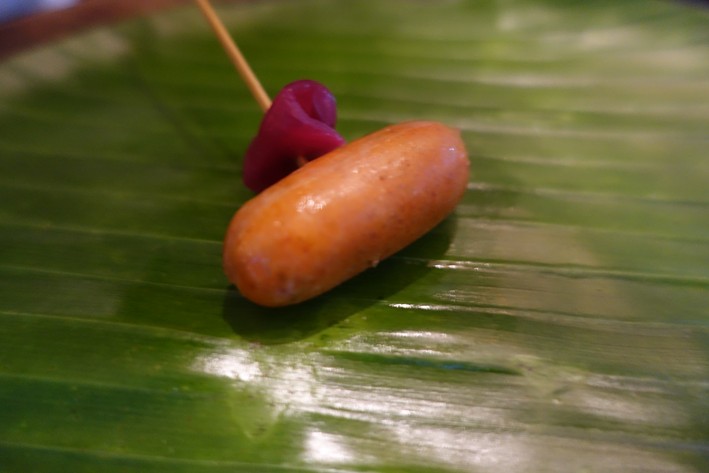

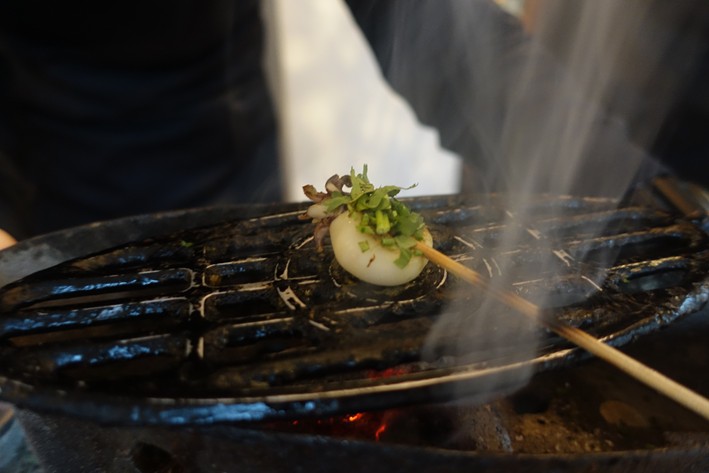




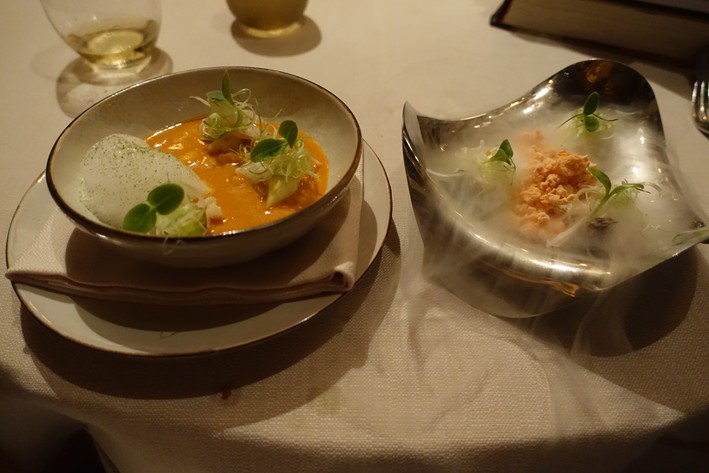
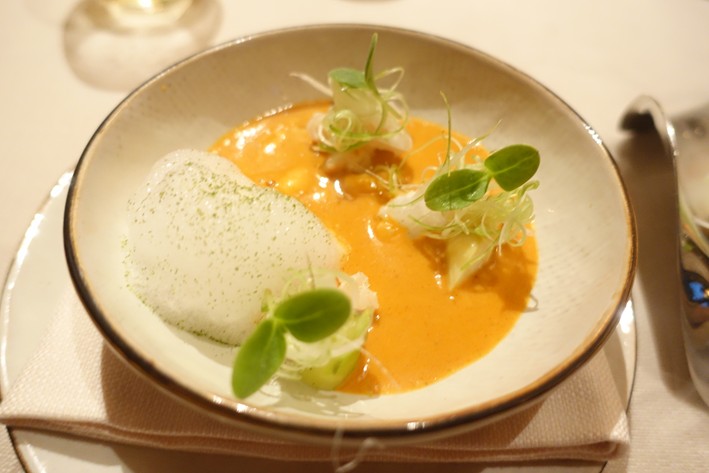

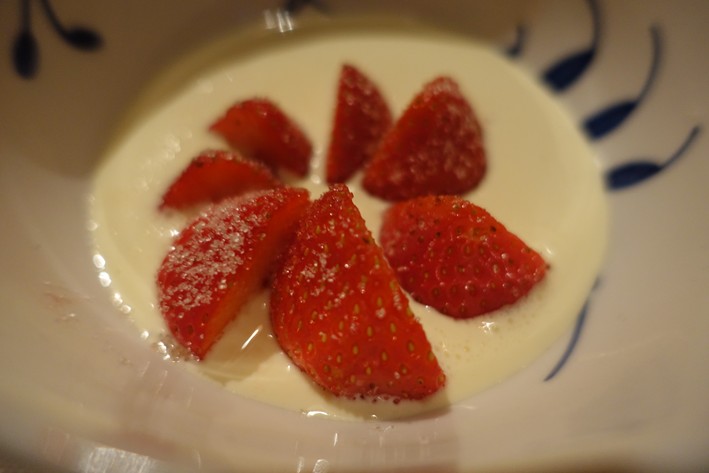
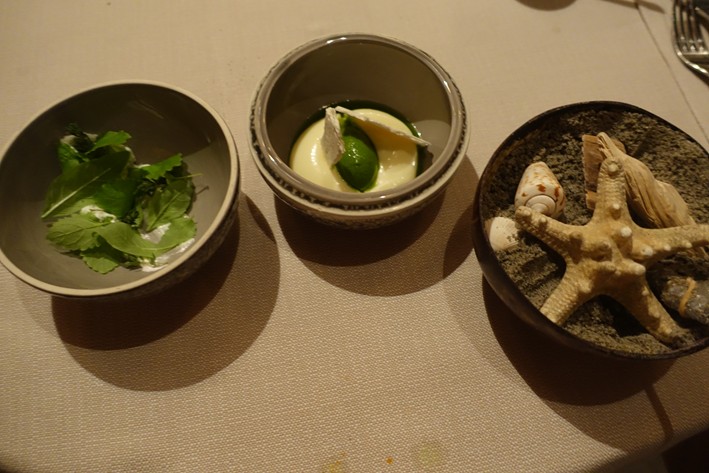
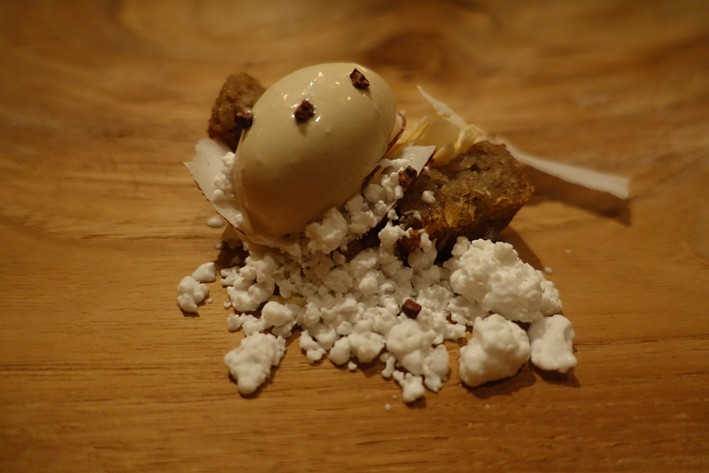
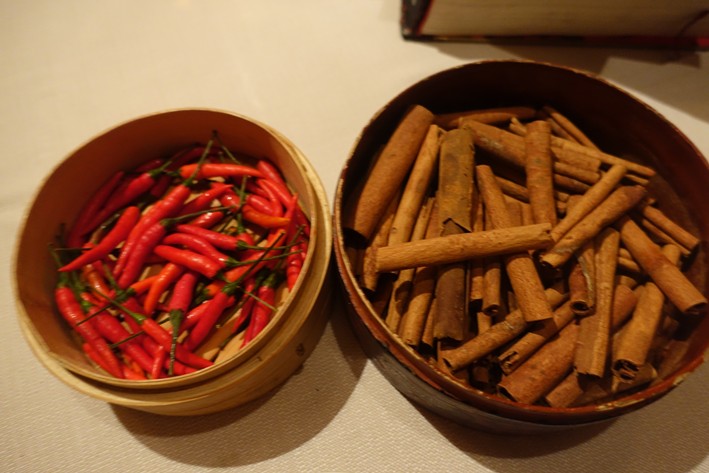
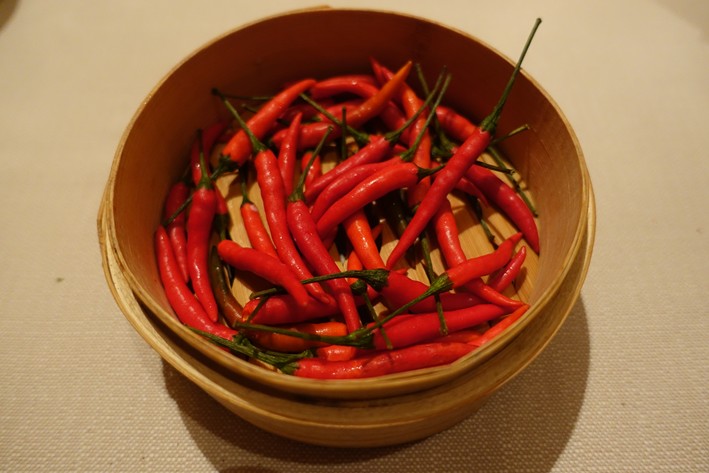
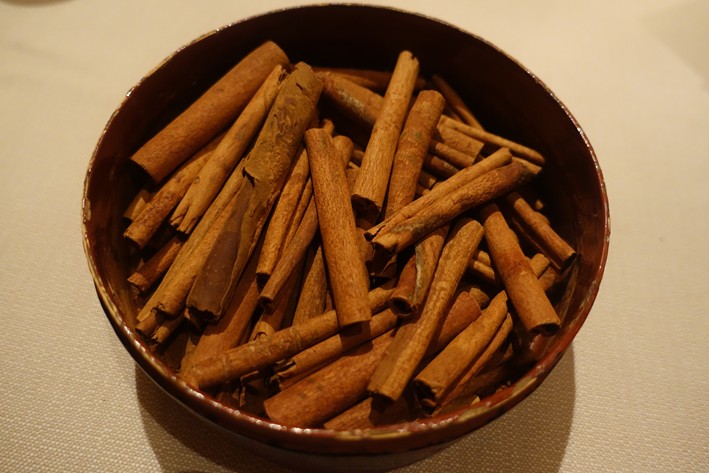


Add a comment
Thank you for submitting your comment, this will be checked and added to the website very soon.
User comments